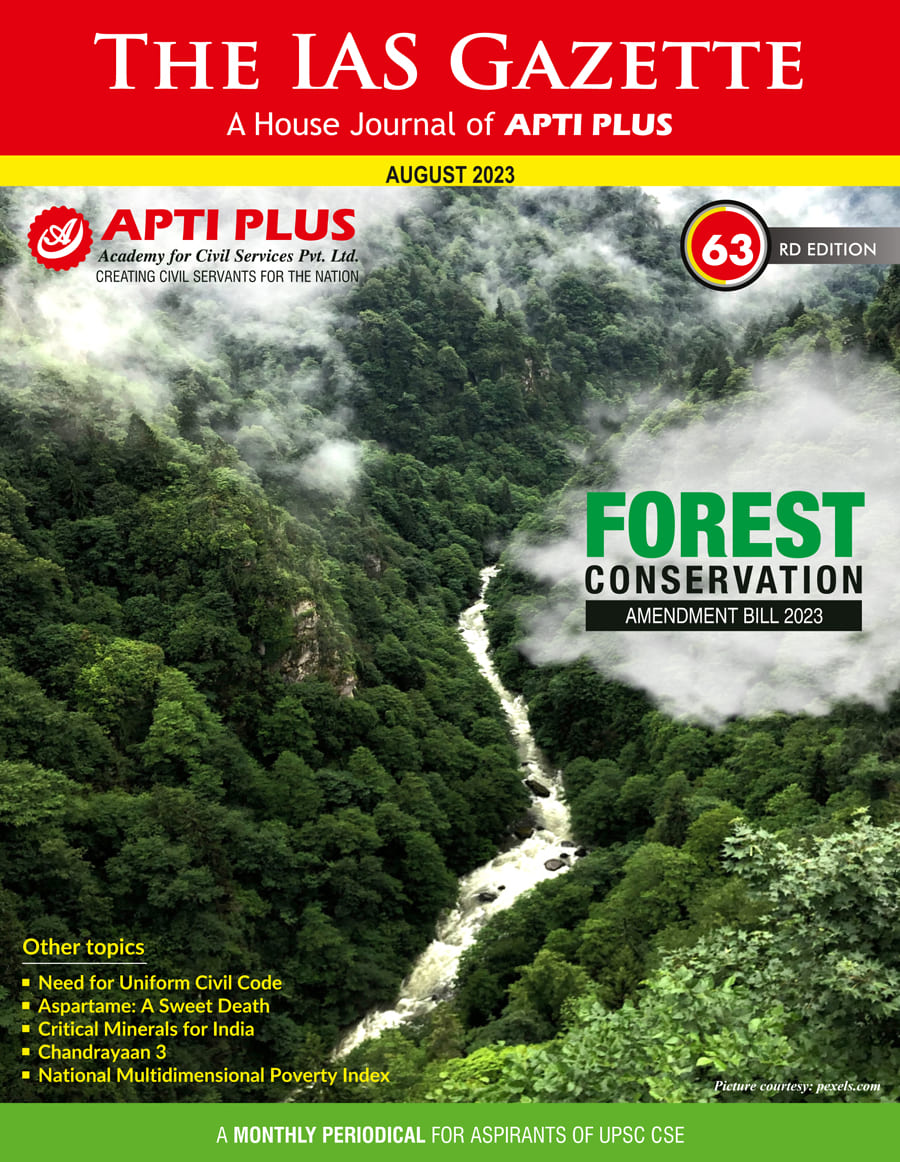AIR QUALITY LIFE INDEX (AQLI) ANNUAL UPDATE 2023
_ANNUAL_UPDATE_2023.jpg)
Disclaimer: Copyright infringement not intended.
Context
- Air pollution is a critical concern in South Asia, with countries like Bangladesh, India, Nepal, and Pakistan facing alarming levels of particulate pollution.
- A recent report titled 'Air Quality Life Index (AQLI) Annual Update 2023' by the University of Chicago's Energy Policy Institute sheds light on the extent of this issue and its profound effects on the region's population.
Details
Life Expectancy Reduction
- Air pollution in South Asia is reducing the average lifespan of individuals by a staggering 5.1 years.
- The most affected countries are Bangladesh, India, Nepal, and Pakistan, collectively accounting for more than half of the global life years lost due to high pollution.
Comparative Impact on Health Threats
- Poor air quality diminishes life expectancy by an average of 5.3 years per person in India.
- In contrast, cardiovascular diseases lead to a reduction of around 4.5 years, while child and maternal malnutrition shorten life expectancy by 1.8 years.
- Notably, tobacco use reduces life expectancy by up to 2.8 years, demonstrating the severe impact of air pollution.
Rising Pollution Levels
- The average person in South Asia experiences particulate pollution levels that are 51.3% higher than those in 2000.
- Had pollution levels remained constant from 2000, residents would have faced a loss of 3.3 years in life expectancy, as opposed to the 5.2 years projected in 2021.
Country-specific Impact
Bangladesh
- Ranked as the most polluted country globally.
- Despite a 2.1% decrease in particulate pollution in 2021, pollution levels have remained significantly high.
- The country faces an average life expectancy reduction of 6.8 years per person.
India
- Second most polluted nation with all 1.3 billion people living in areas exceeding WHO guidelines for particulate pollution.
- Over the years, particulate pollution increased by 67.7%, leading to a decline in average life expectancy by 2.3 years.
- 5 levels in India increased from 56.2 µg/m3 to 58.7 µg/m3 between 2020 and 2021, which is ten times the WHO guideline.
- Delhi's annual average PM2.5 level in 2021 was 126.5 µg/m3, causing a reduction in life expectancy by 11.9 years.
Causes of Pollution Increase
- Rapid industrialization, economic development, and population growth have led to increased energy demand and fossil fuel use.
- Vehicle numbers have multiplied, and electricity production from fossil fuels has tripled, contributing to higher pollution levels.
Health Implications
- 5 particles, measuring just 2.5 micrometers, can easily enter the circulatory system.
- Chronic diseases such as asthma, heart attacks, bronchitis, and respiratory problems are associated with exposure to PM2.5 particles.
Conclusion
The report underscores the urgent need for comprehensive measures to combat air pollution in South Asia. The significant reduction in life expectancy due to pollution necessitates immediate action to curtail emissions, promote cleaner energy sources, and improve air quality standards.
MUST READ ARTICLES:
https://www.iasgyan.in/daily-current-affairs/air-quality-index-34
https://www.iasgyan.in/daily-current-affairs/air-pollution-india
https://www.iasgyan.in/daily-current-affairs/effect-of-geography-on-delhis-pollution
|
PRACTICE QUESTION Q. Delhi is susceptible to critical pollution episodes created by a confluence of meteorological conditions, high vehicular pollution levels, and topography. Comment. (150 Words) |
https://indianexpress.com/article/explained/pollution-reducing-life-spans-south-asia-8916606/





1.png)
